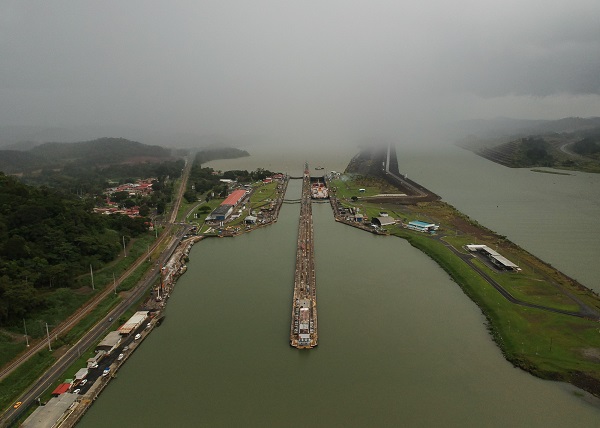Panama, During the tough negotiations that eventually led to the handover of the Panama Canal by the US to Panama 20 years ago, two issues – defence and a prohibition on strikes by workers – proved especially difficult to overcome.
“There would be no treaties, no handover of the canal, we would not be celebrating 20 years of the handover of the canal on the 31st (of December) if we had not agreed to no right to strike and the Neutrality Treaty that reverted (sic) the defence of the canal,” former President Aristides Royo, who helped negotiate the 1977 Torrijos-Carter Treaties and currently serves as canal affairs minister, was quoted as saying by the Efe news.
The 79-year-old Royo, who served as Panama’s president from 1978 to 1982, said these were the “most critical” points in the negotiations
“It took a lot of work” on the issue of defence because on the US side, “they thought in the beginning about keeping the military bases (in Panama), until a general by the name of Brown” told President Jimmy Carter, who was in office from 1977 to 1981, that he could give them up because the canal could be defended by the United States without the facilities, Royo said.
Missile technology had advanced rapidly since the 1960s and by 1977 the 14 US bases with 18,000 military personnel in Panama were no longer necessary for defending the waterway, Royo said, adding that the bases, moreover, were costly to operate and created conflicts in bilateral relations.
Ending the US military presence in Panama “was hard, but we managed it,” the former President said.
The Torrijos-Carter Treaties, in addition to covering the handover of the canal, included the Treaty Concerning the Permanent Neutrality and Operation of the Panama Canal.
The Panama Canal Authority notes in its official history that the Neutrality Treaty called for the waterway to remain permanently neutral, acknowledging that the agreement proved controversial because it did not have an expiration date and allowed the United States to reserve the right to intervene in Panama under certain “unilateral conditions.”
“Another key point, a difficult one for Panamanians, was that there be no right to strike. There was no (right to strike) under US administration (of the canal), but the Republic of Panama always had the right to strike, tenants’ movements, strikers’ movements,” Royo said.
Agreeing to accept this condition in a territory, previously known as the Panama Canal Zone under US control, over which Panama acquired full sovereignty, “was, shall we say, the hardest thing to swallow,” Royo said.
The former treaty negotiator said the issues of defence and the right to strike “were two sine qua non requirements” that were justified because the Panama Canal “is an asset that is in the Republic of Panama, operated by Panamanians, but it serves the world.”
The handover of sovereignty over the waterway to Panama marked a crucial moment in bilateral relations and the end of a conflict over the canal that spanned generations, dating back to the 1903 Hay-Bunau Varilla Treaty, which established the Panama Canal Zone and granted the United States perpetual control over the territory.
On Jan. 9, 1964, some 200 Instituto Nacional students marched to the old Balboa School in the Canal Zone to demand that the United States comply with a 1955 agreement requiring that the Panamanian flag fly over US facilities in the territory.
The protest was met with violence, with hundreds of civilians, police officers and US troops opening fire on the Panamanian students, who responded with stones and handguns.
The clashes left 21 Panamanians dead and more than 500 others wounded, historians said.
Then-President Roberto Chiari, who was in office from October 1960 to October 1964, responded to the incident by breaking relations with the United States.
Royo said the protest by the Instituto Nacional students prompted a change in the US position on the canal.
“The Americans realized that there was a source of conflict, that the canal was not this tranquil place, calm, where they could act like they had sovereignty because that’s what the treaty of perpetuity of 1903 said,” Royo said.
A push was made in the mid-1960s to change the canal’s status, but it was Jimmy Carter’s arrival in the White House in 1977 that proved decisive, Royo said.
Gen. Omar Torrijos internationalized the “cause of Panama,” receiving support around the world for the effort to regain sovereignty over the canal zone, but it was Carter’s victory in the 1976 US presidential election that made the eventual handover of the waterway to Panama possible, Royo said.
On Sept. 7, 1977, Carter, who is now 95, and Torrijos, who died in a plane crash in 1981 at the age of 52, signed the Torrijos-Carter Treaties at the Organization of American States (OAS) headquarters in Washington.









